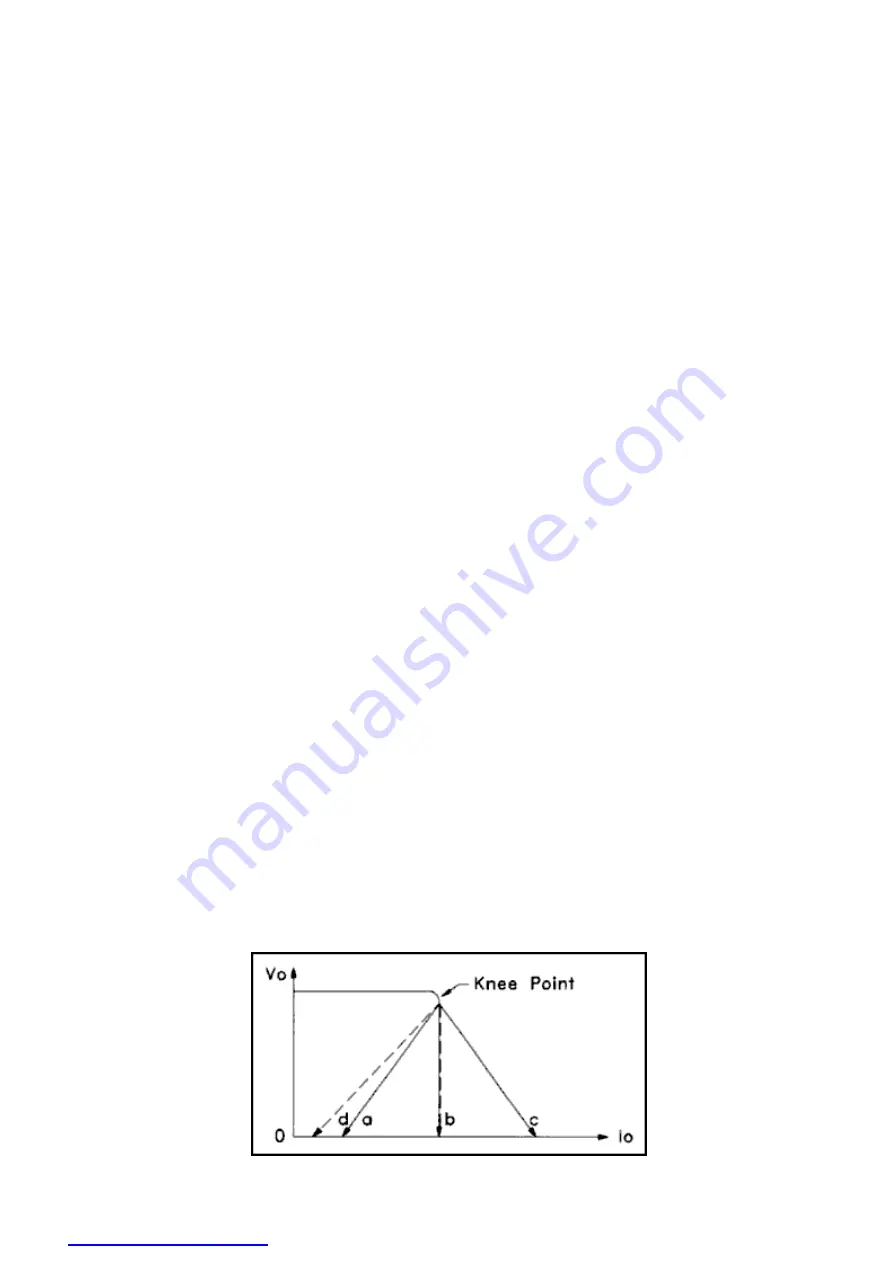
www.procontechnology.com.au
2 Phone: (03) 98306288
2. OUTPUT
2.1 MAXIMUM OUTPUT POWER
Maximum power output (Pout) is defined as:
Pout = Vout x Iout
Where Vout is the output voltage and Iout is the output current. Some DC-DC converters allow Vout to be adjusted. However,
Pout must remain constant. Therefore, if Vout is increased, the maximum Iout must be decreased.
E.g. The DDR-120B-12 converter has an output voltage of 12 volts and an output current of 10 amps. The maximum continuous
power output is 120 watts. The adjustable voltage range is 9 volts to 14 volts. If the output voltage is adjusted to 13.8 volts, the
maximum continuous output current can be calculated by:
Iout = Pout / Vout
i.e. Iout = 120 watts / 13.8 volts = 8.7 amps.
The output voltage can also be adjusted lower than 12 volts. However, due to the design of the output circuit, exceeding the 10
amp maximum output is not recommended as over current protection may activate.
2.2 OVERCURRENT PROTECTION (OCP) / OVERLOAD PROTECTION (OLP)
Most Mean Well DC-DC converters are equipped with protection circuits that automatically operate when the output current or
output power exceeds a minimum of 105-110% of the rating. Some Meanwell module types do not provide continuous overload
or short-circuit protection, in this case the maximum current output should not be exceeded or damage to the device can result.
Types of Protection:
a. Foldback Current Limiting:
The Foldback Current Limiting circuit is designed to linearly decrease both the voltage and current to a level that will prevent
the unit from being damaged during overcurrent/overload conditions. See curve "a" in Fig. 4.
b. Constant Current Limiting:
Constant Current Limiting allows the output current to remain stable, but reduces the output voltage to a level that permits the
safe operation of the unit. Constant Current Limiting is preferred when charging batteries and when driving devices such as
motors, incandescent lamps and highly capacitive loads which have a high initial current. See curve "b" in Fig. 4.
c. Constant Power Limiting:
Constant Power Limiting linearly reduces the output voltage and simultaneously allows the output current to increase. See curve
"c" in Fig. 4.
d. Hiccup Current Limiting:
When overloaded, the output voltage and current will be shut down for a short period of time and then automatically attempt to
periodically recover again (hi-cup) until the fault condition is removed. In some DC-DC converters the output voltage is shut
down permanently*, reducing the output voltage and current to zero. A manual recovery is then necessary. In some cases a DC-
DC converter will operate in constant current mode and then shut down after a time delay of 5 seconds. *It is possible, with
some SD Series units, to modify the DC-DC converter to provide a continuous constant current output rather than shutting
down the unit. Please ask Procon Technology for information.
Fig. 4































